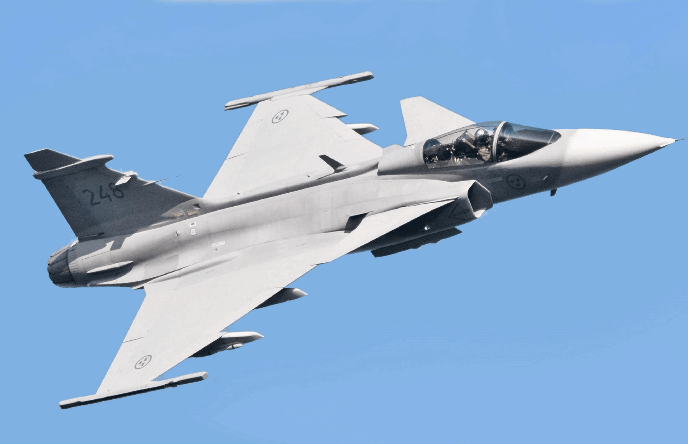Swedish aerospace and defence company, Saab, is facing supply chain issues in the production of the Gripen E/F fighter programme leading to suppliers struggling to maintain services.
What Would Change For India, China If Biden Beats Trump As The Next US President?
Saab has announced a potential impact of SKr1.5 billion ($170 million) on its Aeronautics business unit, reported Flight Global.
“The prolonged pandemic and slow recovery is primarily affecting subcontractors and material supply for the Gripen E/F programme, with consequences for development, verification and production work,” Saab told Flight Global. “The Gripen programme is characterised by long lead times and small series, where components must be certified for airworthiness,” it added.

In a bid to bolster the air capabilities, the Indian Air Force has proposed the procurement of 114 additional fighter jets. Saab Gripen E is also a hot contender for India’s Medium Multi-Role Combat Aircraft (MMRCA) competition.
Losing the first MMRCA competition to Dassault Rafales, Saab is pitching hard for the contract this time by offering its entire production technology to satisfy the ‘Make in India’ provision.
The Gripen E is a 4+ generation fighter jet which can carry up to seven Meteor missiles and possesses beyond visual range (BVR) weapons to track and kill targets at a range of up to 80 miles. It can attain a speed of Mach 2 with supercruise ability, a range of 1500 kilometres and boasts a maximum takeoff load of 16,500kgs.
Power Index: US The Most Dominant Military Power, China The Financial Super-Power
If the Gripen fighter jet is selected for the contract, SAAB had proposed to set up an Indian Aircraft Company (INAC) with Head of the company’s India Campaign, Mats Palmberg, suggesting that the Original Equipment Manufacturers (OEM) control the set up in order to “take responsibility and meet customer expectations”.
Such productions snags can lead to long term delays in production and delivery which may prove to be disadvantageous for the company.
“Some [suppliers] are not getting back on track, and others are halfway, with a huge backlog [of commercial work],” Saab chief executive Micael Johansson said, without identifying any of the companies involved. “We actually have to insource a number of things.”
Initially, SKr1.1 billion charge was incurred in the third quarter and SKr0.4 billion is likely to follow, stated the report. “The assessment of future possible economic impact within Aeronautics has become increasingly uncertain.”
With huge backlogs by the suppliers, the company has decided to insource some things. However, it involves huge costs and time to set up such facilities. “The adjustments are being made now, to make sure that we have a project going forward that is reasonable when it comes to profitability,” Johansson told the news website.
US Navy’s First ‘Stealth Warship’ Test-Fires SM-2 Missile From A Vertical Launching System – WATCH
He further added that changes in the supply chain are not easy. “It takes a lot of effort, time and resources for redesign, re-industrialisation and re-qualification. Those are some of the mitigating actions that we are taking as we speak, and will have to take going forward. What we do today will affect us two to three years ahead, when it comes to the delivery of aircraft.”
While the company is still struggling to maintain services, Johansson assured that they will continue to work and deliver the upcoming aircraft orders.




